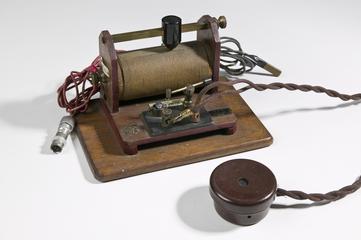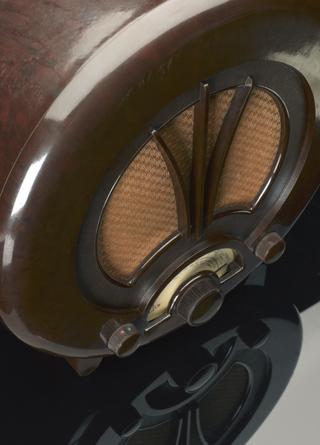

Replica of original Hertz screen for polarisation, 2 metres high, made by Modellbauanstalt Munchen, Munich, 1928-1929. Original in the Deutsches Museum
In 1873, a Scottish mathematician and physicist, James Clerk Maxwell, proposed a theory that electromagnetic waves would behave in much the same way as light beams, and thus could be controlled. Hertz's experiments in 1887 were trying to prove this theory. He used the screen to demonstrate that electromagnetic waves polarised, meaning that they moved in more than one direction. Maxwell's theory and Hertz's experiments provided the scientific foundations for wireless telegraphy.
Details
- Category:
- Radio Communication
- Object Number:
- 1929-300
- Materials:
- metal (unknown), iron and wood (unidentified)
- Measurements:
-
overall: 2000 mm x 2000 mm x 80 mm, 25kg
overall (estimate): 2000 mm x 1190 mm x 1010 mm, 24.5 kg
- type:
- scientific equipment
- credit:
- Purchased from Modellbauanstalt Munchen




